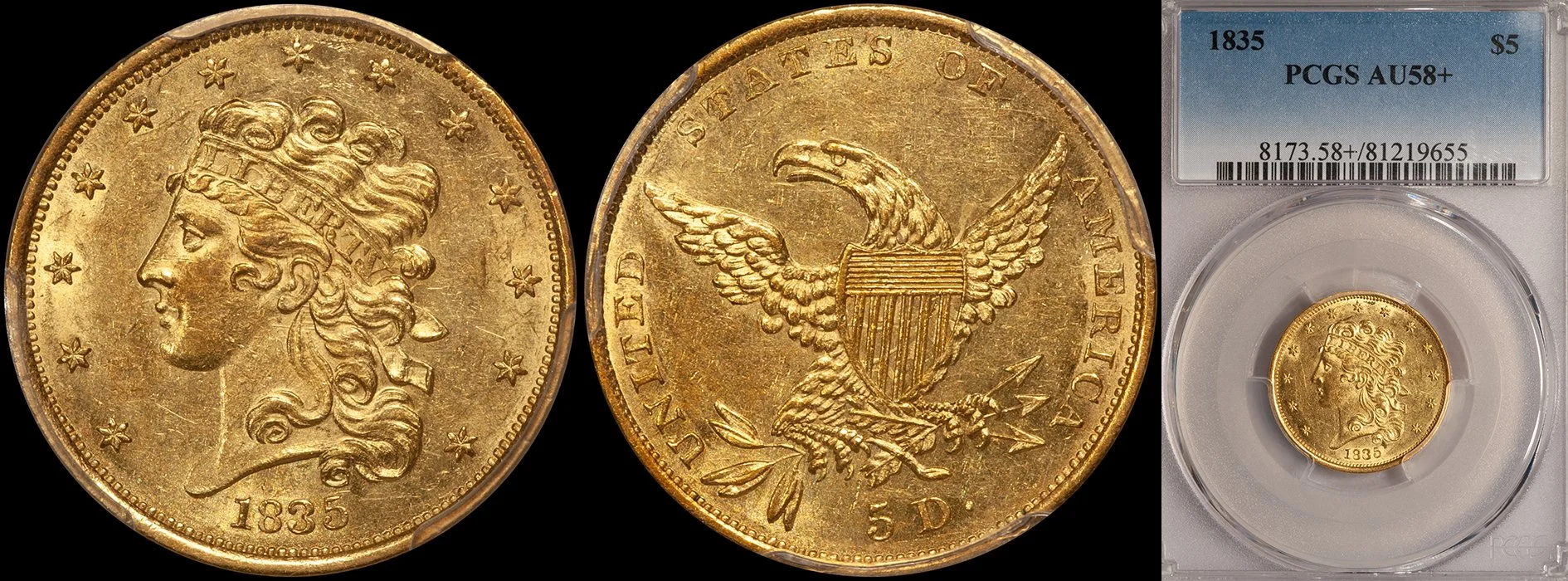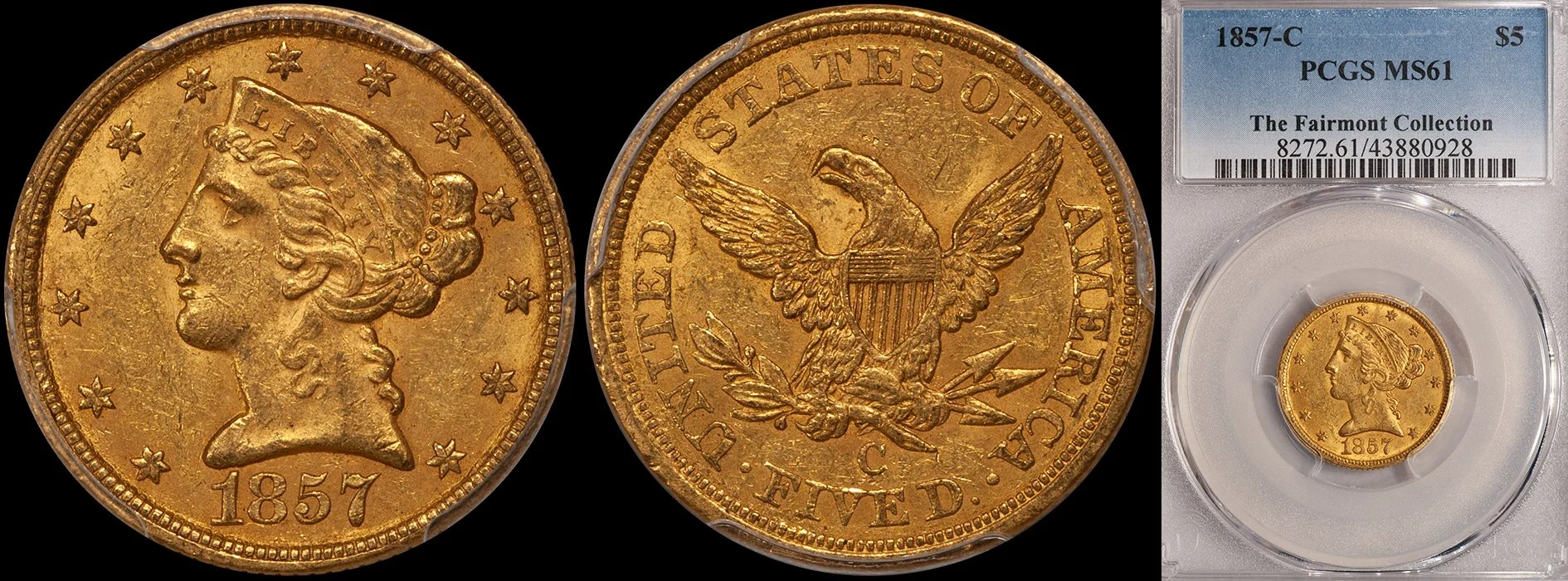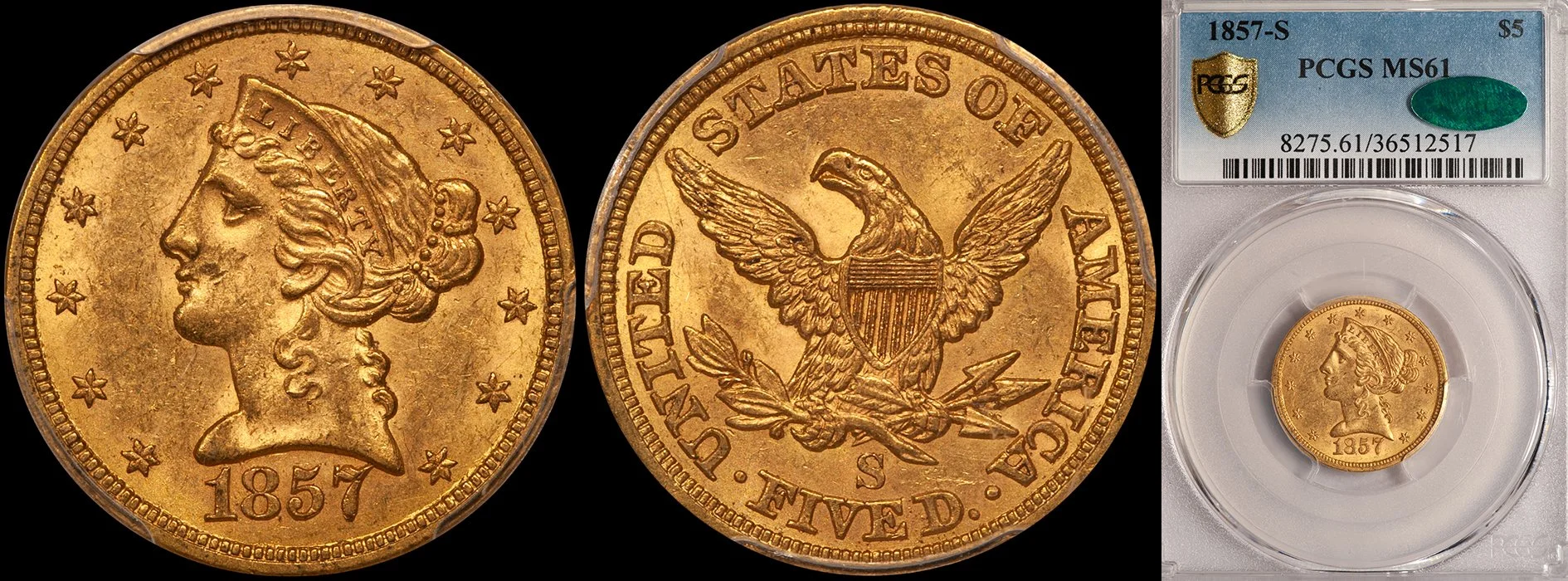Don't Look Now...But Charlotte Half Eagles Appear to be In Demand
/If you follow the rare date gold market, you are no doubt aware of the fact that Charlotte gold has experienced sluggish demand for the last decade. But I’ve noticed a subtle shift in demand for Charlotte half eagles in the last few years; enough so to lead me to believe that there are a significant number of collectors assembling date sets of these coins.
This observation is not based on the fact that specific issues such as the 1838-C and 1839-C half eagles have greatly increased in popularity in the last decade. Their one-year type and first-year-of-issue status make these two issues popular with multiple levels of collectors.
I am witnessing a much broader demand for Charlotte half eagles. This demand is for coins ranging in grade from Very Fine all the way up to MS64 or even MS65. I can gauge this demand based on coins that I buy for resale and place on my website. There have been numerous instances where a seemingly no-big-deal Charlotte half eagle has been ordered by multiple collectors browsing my site; often within minutes of the coin(s) going “live.”
Here are some of my observations regarding Charlotte half eagles:
1861-C $5.00 PCGS AU58 CAC
1. Collectors Are Seeking Coins With Original Color and Choice Surfaces
This should come as no surprise as I have preached the gospel of originality for three+ decades of rare gold coin specialization. With CAC rewarding certain coins for the “right” look, originality can now be quantified and collectors can finally appreciate how scarce even the most available Charlotte half eagles are with CAC approval.
1839-C $5.00 PCGS EF45
2. Numismatically Significant Issues Are Very Popular
In addition to the 1838-C and the 1839-C, a date which seems very popular is the final-year-of-issue 1861-C. I handled three examples (PCGS/CAC VF35, PCGS AU50 and PCGS AU53) in September 2020 and I was surprised how quickly all three sold and how many orders I got for each coin, especially the lowest graded example. But I also note strong demand for issues which I regard as undervalued (within the context of the series). Every time I’ve listed a nice example of an 1841-C, 1844-C, 1846, 1854-C or 1856-C half eagle, they have sold quickly; often to collectors I know are working on complete date sets.
1841-C $5.00 PCGS EF45 CAC
3. Collectors Appreciate Best Value Grades
One numismatic theory I’ve discussed many times in the past is that of the Best Value Grade. For every coin in every series, there is a grade level which represents the biggest bang for the buck. In the Charlotte half eagle series, I believe that there are two BVGs: EF45 and AU58.
EF45 represents the grade at which collectors on a limited budget are going to get a coin which is a nice, well-defined but obviously circulated coin. I personally like the aesthetics of this grade and a nice EF45 is often more cosmetically appealing than an average low-end About Uncirculated coin. In many cases, a nice EF45 Charlotte half eagle can be purchased for less than $3,000.
AU58 represents the grade at which collectors on a larger budget are going to get a coin with the appearance of Uncirculated but with very light circulation. Typically, a nice AU58 coin faces up very well in comparison to an average quality coin graded MS61 or even MS62. In many cases, a nice AU58 Charlotte half eagle can be purchased for less than $6,000.
1838-C $5.00 PCGS MS63+ CAC
4. “Super Grade” Charlotte Half Eagles Are Recognized As Good Value
Grade is relative when it comes to Charlotte half eagles and, for most issues, any coin grading MS63 or finer qualifies as a Condition Census example. I don’t handle coins of this quality as often as I would like to but when I do, they sell quickly.
It is ironic that properly graded MS62 to MS64 Charlotte half eagles are worth less in 2020 than they were in 1999. This makes little sense to most collectors but it can be best explained as follows: the demand for these coins remains fairly low and there are enough coins in high grade holders that are problems (they have been doctored or they are over-graded) that they drag the nice coins down in price.
I have offered enough “super grade” PCGS/CAC Charlotte half eagles in the last few years to state with certainty that these have created a lot of demand when I made them available. But prices remain flat for these coins primarily due to the fact that price reporting for non-auction coins isn’t factored into the PCGS Price Guide and other important sources.
1856-C $5.00 NGC AU58 CAC
5. Viewed As A Set, Charlotte Half Eagles Are Both Affordable and Interesting
There are no very expensive individual dates in the Charlotte half eagle series, and thus it is totally feasible to complete a set. In fact, a 24-coin set in the VF-EF range could be assembled for under $100,000 and it would include some nice coins.
Even collectors who hate to be constrained by the rigorousness of a complete set can appreciate the other options available to them. These include but are not limited to the following:
Type Set: includes Classic Head (1838-C), First Liberty Head (1839-C), Second Liberty Head with Small Letters (1840-1843 C), and Second Liberty Head with Large Letters (1844-1861-C).
Decades Set: 1830s (1838-C or 1839-C), 1840s, 1850s, and 1860s (1861-C).
Grading Set: An example in different grades; say EF40 through AU58.
Charlotte half eagles still trail their counterparts from Dahlonega and Carson City when it comes to overall popularity, but I sense the gap is beginning to close. And it is not impossible that the half eagles from Charlotte will become even more popular in the next few years as more collectors discover this interesting series.
Would you like to work on a set of Charlotte half eagles with the world’s leading expert? Contact Doug Winter via email at dwn@ont.com for more information.

















